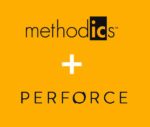You are currently viewing SemiWiki as a guest which gives you limited access to the site. To view blog comments and experience other SemiWiki features you must be a registered member. Registration is fast, simple, and absolutely free so please,
join our community today!
WP_Term Object
(
[term_id] => 157
[name] => EDA
[slug] => eda
[term_group] => 0
[term_taxonomy_id] => 157
[taxonomy] => category
[description] => Electronic Design Automation
[parent] => 0
[count] => 4182
[filter] => raw
[cat_ID] => 157
[category_count] => 4182
[category_description] => Electronic Design Automation
[cat_name] => EDA
[category_nicename] => eda
[category_parent] => 0
[is_post] =>
)
With the announcement of early PDK availability for the 3nm GAA process node, designers are extremely interested in the characteristics of the new “gate-all-around” transistor structure and how it compares to the existing FinFET device. The GAA transistor has been denoted as a (horizontal) nanowire or nanosheet.
I will talk… Read More
The semiconductor industry today is faced with several substantial issues—the continuing rise in design costs for complex SoCs, the decrease in the incidence of first-time-right designs and the increase in the design cycle time against shrinking market windows and decreasing product life cycles. An additional factor has … Read More
If you search on “the six signs” you will find references to a fantasy novel, “The Dark is Rising Sequence” by Susan Cooper. In this fantasy work there are six signs: wood, bronze, iron, water, fire and stone. Their purpose has something to do with driving away the Dark. Here is a quote from the book that puts these six signs in some context:… Read More
Back in July I first read the news that Perforce had acquired Methodics, and wasn’t too surprised, because many of the EDA vendors that we blog about do get acquired or merge with similar sized companies in order to be part of a bigger offering. When Methodics announced a webinar introducing IPLM 3.0 (IP Lifecycle Management),… Read More
Power seems to be on everyone’s mind these days. Hyperscale data centers worry about operating costs unless power is optimized. The AI accelerators in the Edge can’t be effective without optimized power. Advanced 2.5 and 3D packages simply can’t remove the heat unless power is optimized. And then there’s all those gadgets we … Read More
“For more than 18 years, we never stopped innovating at Defacto. We are aware of EDA Mantra “Innovate or Die!”. Innovation is in our DNA, and we never stopped adding new automated capabilities to the SoC design community to help facing complexity and cost challenges, which increase every year.”
Before founding Defacto… Read More
Design for test (DFT) requires a lot of up-front planning that can be difficult to alter if testing needs or performance differ from initial expectations. Hierarchical methodologies help in many ways including making it easier to reduce on chip resources such as the number of test signals. Also, hierarchical test allows for speed-ups… Read More
Despite the fact that FPGA based systems make it easy to add ‘hardware in the loop’ for verification, the benefits of HDL and gate level simulation are critical for finding and eliminating issues and bugs. The problem is that software simulators can require enormous amounts of time to run full simulations over sufficient time intervals… Read More
Earlier this year. as part of my coverage of the virtual Design Automation Conference (DAC), I interviewed Agnisys CEO and founder Anupam Bakshi. He talked about the new products they introduced at the show and filled me in on the history of the company and his own background. Recently, Anupam presented the webinar “System Development… Read More
Workflows allow the world to function. The orderly process of sequencing tasks and automating handoffs creates tremendous potential for efficiency and error avoidance. As they say, time is money and workflows can save a lot of time. The principle applies in all kinds of industries. If you design chips for a living, you’re very … Read More











TSMC N3 Process Technology Wiki